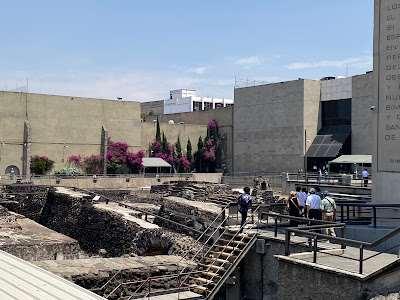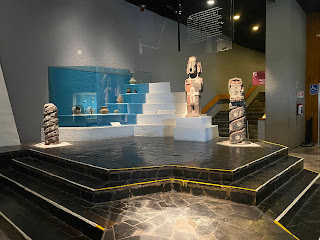Our rather modern hotel, owned by a Spanish hotel chain, was central located in the Historic District. And boy was it historic! My very limited history education of over fifty years ago certainly did not include much Mexican history. Once again, I am reminded of how insular many of us from the US are when it comes to other cultures. Another reason travel is so good!
First Day
The Zócalo is one of the largest public squares in the world, where people come to gather for festivals, events, concerts and demonstrations. It was built on the ruins of the Mexica/Aztec people’s ceremonial centre, the Templo Mayor, at the heart of Tenochtitlan, their capital city.The Zocalo is bordered by the presidential palace, the grand Metropolitan Cathedral, Federal buildings and hotels and businesses.
On the northern edge of the Zocalo is the enormous Metropolitan Cathedral. Initially, there was a modest church built there in 1520 on the rubble of Tenochtitlán by the Spanish. In 1553 the first stone was laid in the construction of the Cathedral. It took 243 years for completion. 25 multi-ton bells are still run by hand in the two towers.
Fourteen of the cathedral's sixteen chapels are open to the public and each chapel is dedicated to a different saint or saints. It is home to two of the largest 18th-century organs in the Americas. There is a crypt underneath the cathedral that holds the remains of many former archbishops. The cathedral has approximately 150 windows.
The first and most impressive interior structure is the Altar of Forgiveness at the rear of the Cathedral. For seven years Spanish architect Balbás, built the alter from cedar beginning in 1718. It was then gilded and finished by Francico Martínez in 1736.
 |
| One of two grand pipe organs |
Mexico City, has been sinking into the lakebed from the day it was built. Now that the city is a megalopolis with over 18 million people drawing water from underground sources the water tables have dropped considerably, especially during the latter half of the 20th century and any older buildings appear crooked.
 |
Reconstruction of this section of the Cathedral is ongoing to
shore up sinking. |



















































